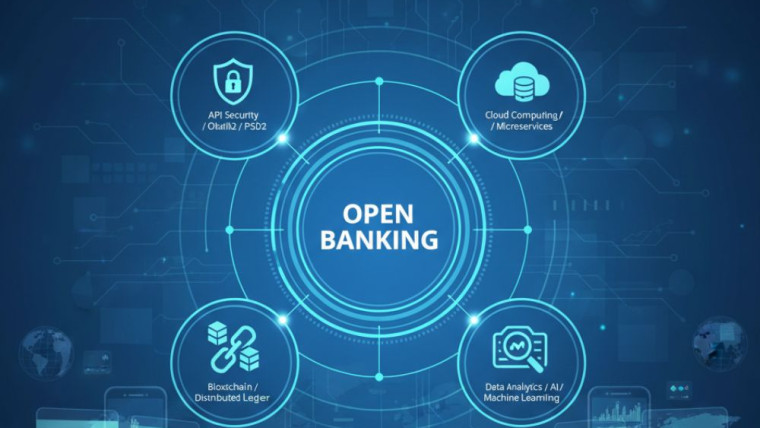Digital assets have become an essential part of the modern world. From online documents to digital photos, much of what we interact with daily now exists in digital form. But a key question arises in many discussions: is digital considered non financial?
This question might sound simple, but the answer can be complex depending on how and where it’s applied. Let’s explore what “non financial” really means, what qualifies as “digital,” and how these two terms relate to each other.
What Do We Mean by “Non Financial”?
The term “non financial” refers to anything that doesn’t have a direct monetary value or isn’t involved in financial transactions.
It includes:
-
Personal data
-
Intellectual property
-
Educational content
-
Art, media, and literature
These items may have value, but they aren’t treated like cash, stocks, or bonds. In business and legal terms, non financial assets are recorded and managed separately from financial ones.
To understand the evolving landscape, it helps to look at companies like First Digital Finance Corporation and how they operate in the digital space.

What Qualifies as Digital?
“Digital” refers to anything stored or transmitted in a binary format. This includes:
-
Digital documents
-
Emails
-
Photos and videos
-
Software
-
Online accounts
All of these are digital, but not all of them are tied to money or investments. That’s where the line between financial and non financial starts to blur.
Digital Doesn’t Always Mean Financial
Here’s where the key understanding begins: not all digital items are financial. In fact, the majority of digital assets are considered non financial.
Think about your emails, saved photos, or your resume stored on Google Drive. All of these are digital, yet none of them are directly tied to money. They might help you earn money or support a financial goal, but they are not financial items themselves.
This confirms that digital is often considered non financial, especially in legal, accounting, and data privacy contexts.
Examples of Non Financial Digital Assets

To clarify further, here are a few real-world digital assets that are typically classified as non financial:
Digital Documents
These include your Word files, PDFs, notes, and spreadsheets that don’t deal with monetary transactions. Even if they’re used in business, they remain non financial unless they record financial data.
Emails
Emails often contain critical communication, but they are not financial instruments. They serve as records, not transactions.
Photos and Videos
Unless these are being sold or licensed, they’re considered creative property — and that puts them in the non financial category.
Educational Materials
eBooks, online courses, or academic content are digital and valuable, but still non financial.
When Can Digital Be Considered Financial?
Now, there are times when digital assets do fall under the financial umbrella.
For example:
-
Cryptocurrency: A digital currency with a clear financial value.
-
Online bank statements: These are digital but represent financial records.
-
Digital stocks or bonds: These are also digital but entirely financial in nature.
In these cases, the function of the digital asset is what shifts its classification.
So while the format is digital, the content and purpose determine if it’s financial or non financial.
Legal and Compliance Contexts
From a compliance point of view, distinguishing between financial and non financial digital assets matters a lot. In data privacy laws such as GDPR, non financial data like usernames or browsing habits still need protection, even though they don’t involve money.
Companies must label and manage non financial digital data separately from financial data. This ensures transparency and keeps them aligned with global regulations.
Why This Matters
Knowing whether something is considered non financial affects how it’s stored, protected, and reported.
Here are a few reasons this question is important:
1. Privacy Regulations
Regulators treat financial and non financial digital data differently. Non financial data like location or device info still needs proper safeguards, even if it isn’t about money.
2. Risk Management
Businesses and individuals need to understand what kind of data they hold. Misclassifying digital assets can lead to compliance failures or security lapses.
3. Accounting and Reporting
Financial statements must clearly separate financial and non financial assets. Digital formats make tracking easier, but they also create room for confusion.
Final Thoughts
To answer the core question: is digital considered non financial?
Yes — in most cases, digital assets are non financial. They hold value, may support financial decisions, and are often crucial for operations, but they do not directly represent money, investments, or financial liabilities.
Only when a digital item is used specifically for monetary value — like cryptocurrency or online banking records — does it cross into the financial category.
Understanding this difference is key for anyone managing digital content, building digital platforms, or working with data in a business or legal setting.
Summary
The digital world includes both financial and non financial elements, but the format alone doesn’t decide classification. The purpose and use do. Most digital content we interact with daily is non financial — and knowing that helps in everything from compliance to better digital asset management.
If you’d like help categorizing your own digital assets or want to ensure you’re meeting compliance requirements, consult with a legal or digital asset expert. It’s always better to know where you stand before it turns into a risk.








What Is FinTech? A Beginner’s Guide to the Finteching 2025
Finance in the Metaverse: Will Virtual Economies Reshape Real-World Credit Scores?
AI in Wealth Management: How Artificial Intelligence is Reshaping Finance
AI-Powered Credit Scoring: Revolutionizing Digital Lending in the Digital Finance Era
Embedded Finance: How Seamless Financial Services Are Integrating into Everyday Apps
AI-Powered Credit Scoring: Revolutionizing Digital Lending in the Digital Finance Era
Harnessing AI in Digital Finance: Revolutionizing Risk Management and Customer Experience
How Open Banking APIs Are Revolutionizing Digital Finance?